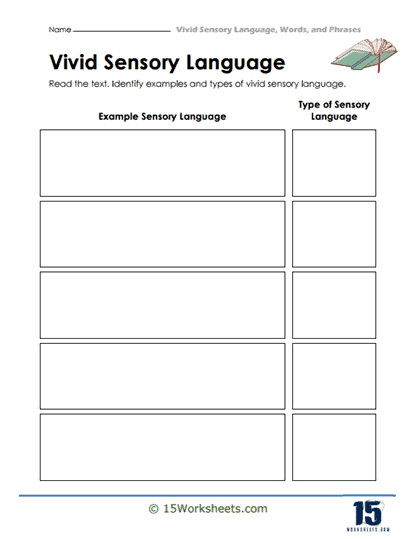An Example For Each

Worksheet Description
This worksheet is designed to develop students’ ability to identify and understand the use of vivid sensory language in text. Students are instructed to read a text and then pinpoint specific examples of language that appeal to the senses, categorizing each according to the type of sensory experience it evokes, such as visual, auditory, olfactory, gustatory, or tactile. The worksheet provides spaces for students to write down the examples they find, along with the corresponding type of sensory language, fostering close reading and analytical skills.
The worksheet aims to teach students how sensory details can be used in writing to create a vivid and immersive experience for the reader. By identifying these elements in existing texts, students learn to appreciate the effectiveness of sensory language in bringing a story to life. This exercise also helps them to enhance their own writing by incorporating such descriptive language, encouraging them to be more deliberate and varied in their use of details that engage the readers’ senses. It’s an important component of developing a more descriptive and engaging writing style.
